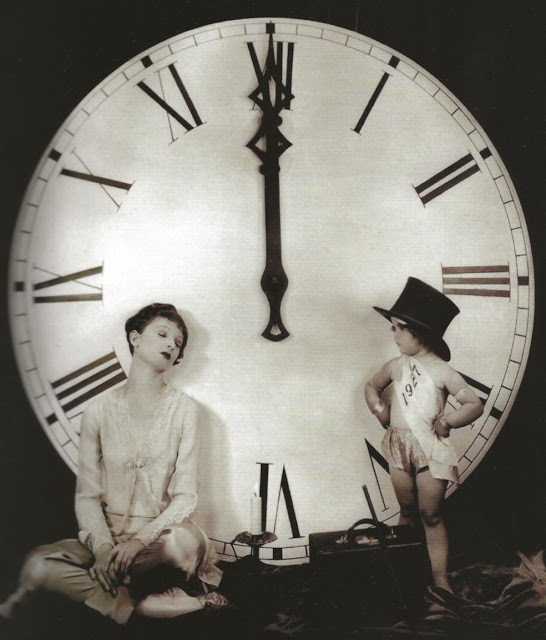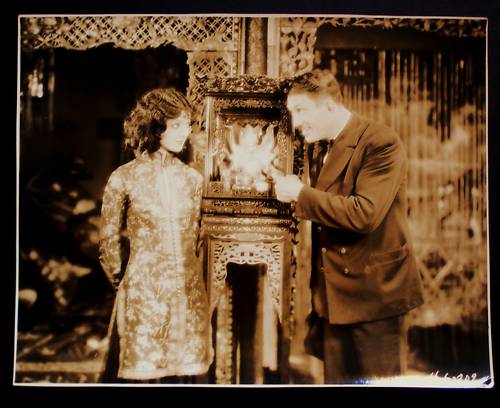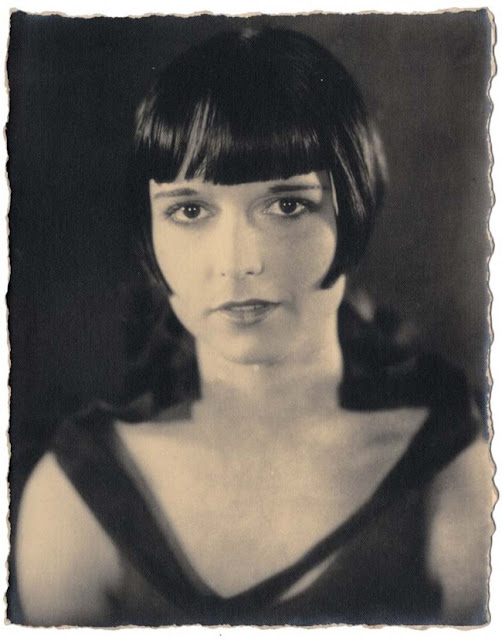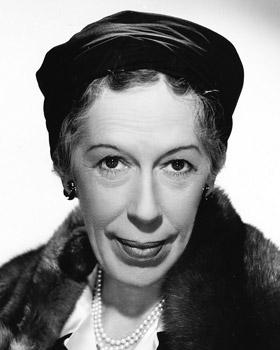Here is a small selection of new and recommended books on early film (the silent and early sound era). Perhaps it's just me, but it seems there are fewer appealing books on this increasingly distant time in film history. I haven't read all of these book, only a couple of them, but know of the many of the author's previous work and am confident it their quality. And, I am eager to check them out myself. Some of these titles, like those on Greta Garbo, should also intrigue those interested in Louise Brooks. Each of these recommended works was released sometime in 2021.
Garbo
by Robert Gottlieb
Award-winning master critic Robert Gottlieb takes a singular and
multifaceted look at the life of silver screen legend Greta Garbo, and
the culture that worshiped her.
“Wherever you look in the period between 1925 and 1941,” Robert Gottlieb writes in
Garbo,
“Greta Garbo is in people’s minds, hearts, and dreams.” Strikingly
glamorous and famously inscrutable, she managed, in sixteen short years,
to infiltrate the world’s subconscious; the end of her film career,
when she was thirty-six, only made her more irresistible. Garbo appeared
in just twenty-four Hollywood movies, yet her impact on the world―and
that indescribable, transcendent presence she possessed―was rivaled only
by Marilyn Monroe’s. She was looked on as a unique phenomenon, a
sphinx, a myth, the most beautiful woman in the world, but in reality
she was a Swedish peasant girl, uneducated, naïve, and always on her
guard. When she arrived in Hollywood, aged nineteen, she spoke barely a
word of English and was completely unprepared for the ferocious
publicity that quickly adhered to her as, almost overnight, she became
the world’s most famous actress.
In
Garbo, the acclaimed
critic and editor Robert Gottlieb offers a vivid and thorough retelling
of her life, beginning in the slums of Stockholm and proceeding through
her years of struggling to elude the attention of the world―her
desperate, futile striving to be “left alone.” He takes us through the
films themselves, from M-G-M’s early presentation of her as a “vamp”―her
overwhelming beauty drawing men to their doom, a formula she loathed―to
the artistic heights of
Camille and
Ninotchka (“Garbo Laughs!”), by way of
Anna Christie (“Garbo Talks!”),
Mata Hari, and
Grand Hotel.
He examines her passive withdrawal from the movies, and the endless
attempts to draw her back. And he sketches the life she led as a very
wealthy woman in New York―“a hermit about town”―and the life she led in
Europe among the Rothschilds and men like Onassis and Churchill. Her
relationships with her famous co-star John Gilbert, with Cecil Beaton,
with Leopold Stokowski, with Erich Maria Remarque, with George
Schlee―were they consummated? Was she bisexual? Was she sexual at all?
The whole world wanted to know―and still wants to know.
In
addition to offering his rich account of her life, Gottlieb, in what he
calls “A Garbo Reader,” brings together a remarkable assembly of
glimpses of Garbo from other people’s memoirs and interviews, ranging
from Ingmar Bergman and Tallulah Bankhead to Roland Barthes; from
literature (she turns up everywhere―in Hemingway’s
For Whom the Bell Tolls,
in Evelyn Waugh, Graham Greene, and the letters of Marianne Moore and
Alice B. Toklas); from countless songs and cartoons and articles of
merchandise. Most extraordinary of all are the pictures―250 or so
ravishing movie stills, formal portraits, and revealing snapshots―all
reproduced here in superb duotone. She had no personal vanity, no
interest in clothes and make-up, yet the story of Garbo is essentially
the story of a face and the camera. Forty years after her career ended,
she was still being tormented by unrelenting paparazzi wherever she
went. Includes Black-and-White Photographs
The Savvy Sphinx: How Garbo Conquered Hollywood
by Robert Dance
From the late 1920s through the thirties, Greta Garbo (1905–1990) was
the biggest star in Hollywood. She stopped making films in 1941, at only
thirty-six, and thereafter sought a discreet private life. Still, her
fame only increased as the public and press clamored for news of the
former actress. At the time of her death, forty-nine years later,
photographers continued to stalk her, and her death was reported on the
front pages of newspapers worldwide.
In
The Savvy Sphinx: How Garbo Conquered Hollywood, Robert
Dance traces the strategy a working-class Swedish teenager employed to
enter motion pictures, find her way to America, and ultimately become
Hollywood’s most glorious product. Brilliant tactics allowed her to
reach Hollywood’s upper-most echelon and made her one of the last
century’s most famous people. Garbo was discovered by director Mauritz
Stiller, who saw promise in her nascent talent and insisted that she
accompany him when he was lured to America by an MGM contract. By twenty
she was a movie star and the epitome of glamour. Soon Garbo was among
the highest-paid performers, and in many years she occupied the number
one position. Unique among studio players, she quickly insisted on and
was granted final authority over her scripts, costars, and directors.
But Garbo never played the Hollywood game, and by the late twenties her
unwillingness to grant interviews, attend premieres, or meet visiting
dignitaries won her the sobriquet the Swedish Sphinx.
The Savvy Sphinx,
which includes over a hundred beautiful images, charts her rise and her
long self-imposed exile as the queen who abdicated her Hollywood
throne. Garbo was the paramount star produced by the Hollywood studio
system, and by the time of her death her legendary status was assured.
The Rise & Fall of Max Linder: The First Cinema Celebrity
by Lisa Stein Haven
Max Linder, born Gabriel Leuvielle in St. Loubes, France in 1883,
started in films with the Pathe Brothers in Vincennes, just outside of
Paris in 1905, making him one of the first film comedians that became
world-renowned. In fact, there is evidence that Linder was the first
screen celebrity to see his name in print. His comedy timing and gags
(Linder started writing his own scenarios early on) have been copied and
imitated by many of his followers, including Charlie Chaplin.
Linder's
story is both a comedy and a tragedy. His meteoric rise to fame by
1907/8 hit a roadblock in 1914 with the onset of World War I, and was
dealt a death blow by his attempts to revive his career in America and
Austria. His marriage to a young wife was ill-fated and ill-timed,
leading Linder to take the life of his wife and himself on the night of
October 31, 1925, leaving a 16-month-old daughter behind, Maud, who
would devote her life to restoring his film legacy.
Lisa Stein Haven is an Professor of English at Ohio University
Zanesville, specializing in British and American modernist literature,
the Beat poets and silent film comedy, especially the work of Charlie
and Syd Chaplin, Buster Keaton and Max Linder.
I wrote about this excellent book on an earlier blog. Check it out HERE.
Movie Mavens: US Newspaper Women Take On the Movies, 1914-1923
edited by Richard Abel

During the early era of cinema, moviegoers turned to women editors and
writers for the latest on everyone's favorite stars, films, and
filmmakers. Richard Abel returns these women to film history with an
anthology of reviews, articles, and other works. Drawn from newspapers
of the time, the selections show how columnists like Kitty Kelly, Mae
Tinee, Louella Parsons, and Genevieve Harris wrote directly to female
readers. They also profiled women working in jobs like scenario writer
and film editor and noted the industry's willingness to hire women.
Sharp wit and frank opinions entertained and informed a wide readership
hungry for news about the movies but also about women on both sides of
the camera. Abel supplements the texts with hard-to-find biographical
information and provides context on the newspapers and silent-era movie
industry as well as on the professionals and films highlighted by these
writers.
An invaluable collection of rare archival sources, Movie Mavens reveals women's essential contribution to the creation of American film culture.
Richard Abel is a professor emeritus of international cinema and media studies at the University of Michigan. His recent books include Menus for Movie Land: Newspapers and the Emergence of American Film Culture, 1913-1916, and Motor City Movie Culture, 1916-1925. He is also the coeditor of Barbara C. Hodgdon’s writings, Ghostly Fragmentsand the 2017 winner of the Jean Mitry Award.
20th Century-Fox: Darryl F. Zanuck and the Creation of the Modern Film Studio
by Scott Eyman
From
New York Times
bestselling author Scott Eyman, this is the story one of the most
influential studios in film history, from its glory days under the
leadership of legendary movie mogul Darryl F. Zanuck up to its 2019
buyout by Disney.
March 20, 2019 marked the end of an era
-- Disney took ownership of the movie empire that was Fox. For almost a
century before that historic date, Twentieth Century-Fox was one of the
preeminent producers of films, stars, and filmmakers. Its unique
identity in the industry and place in movie history is unparalleled --
and one of the greatest stories to come out of Hollywood. One man, a
legendary producer named Darryl F. Zanuck, is the heart of the story.
This narrative tells the complete tale of Zanuck and the films, stars,
intrigue, and innovations of the iconic studio that was.
Scott Eyman is an award-winning author of 15 books about the movies, three of which have been New York Times bestsellers. He's a frequent book reviewer for The Wall Street Journal, Film Comment, and the New York Observer. His books include Hank & Jim: The Fifty-Year Friendship of Henry Fonda and James Stewart; John Wayne: Louis B. Mayer: Lion of Hollywood; and Print the Legend: The Life and Times of John Ford.
Silent Vignettes: Stars, Studios and Stories from the Silent
by Tim Lussier
Pickford, Lloyd, Keaton, Garbo. You're familiar with these icons of
silent film, of course - and they are here within these pages. But are
you familiar with Francelia Billington? No? How about Harold Lockwood,
Edna Flugrath, Marion Byron, Virginia Brown Faire? Still, no?
Well, fear
not. Film historian and author Tim Lussier ("Bare Knees" Flapper: The
Life and Films of Virginia LeeCorbin) shines a belated spotlight on
these unjustly forgotten men and women, each of whom brought untold joy
to millions of fans in the years before movies learned to talk. When you
read their stories in Silent Vignettes, you'll understand why.
"Silent
film fans know there is a vast world of long-forgotten studios and
stars just waiting to be rediscovered. . . Tim Lussier helps bring a
complex era to life with these tales of 'film folks,' both familiar and
obscure." - Lea Stans
Vitagraph: America's First Great Motion Picture Studio
by Andrew A. Erish
In
Vitagraph, Andrew A. Erish provides a comprehensive
examination and reassessment of the company most responsible for
defining and popularizing the American movie. This history challenges
long-accepted Hollywood mythology that simply isn't true: that Paramount
and Fox invented the feature film, that Universal created the star
system, and that these companies, along with MGM and Warner Bros.,
developed motion pictures into a multi-million-dollar business. In fact,
the truth about Vitagraph is far more interesting than the myths that
later moguls propagated about themselves.
Established in 1897 by
J. Stuart Blackton and Albert E. Smith, Vitagraph was the leading
producer of motion pictures for much of the silent era. Vitagraph
established America's studio system, a division of labor utilizing
specialized craftspeople and artists, including a surprising number of
women and minorities, whose aesthetic innovations have long been
incorporated into virtually all commercial cinema. They developed
fundamental aspects of the form and content of American movies,
encompassing everything from framing, lighting, and performance style to
emphasizing character-driven comedy and drama in stories that respected
and sometimes poked fun at every demographic of Vitagraph's vast
audience. The company overcame resistance to multi-reel motion pictures
by establishing a national distribution network for its feature films.
Vitagraph's international distribution was even more successful,
cultivating a worldwide preference for American movies that endures to
the present. For most of its existence America's most influential studio
was headquartered in Brooklyn, New York before relocating to Hollywood.
An
historically rigorous and thorough account of the most influential
producer of American motion pictures during the silent era, Erish draws
on valuable primary material long overlooked by other historians to
introduce readers to the fascinating, forgotten pioneers of Vitagraph.
++++++
I have added some of these titles to my Louise Brooks Society wish list. If you are looking to help support the efforts of the Louise Brooks Society and gift the LBS with something from this list, your contribution will be greatly appreciated! Long live Lulu.



















































